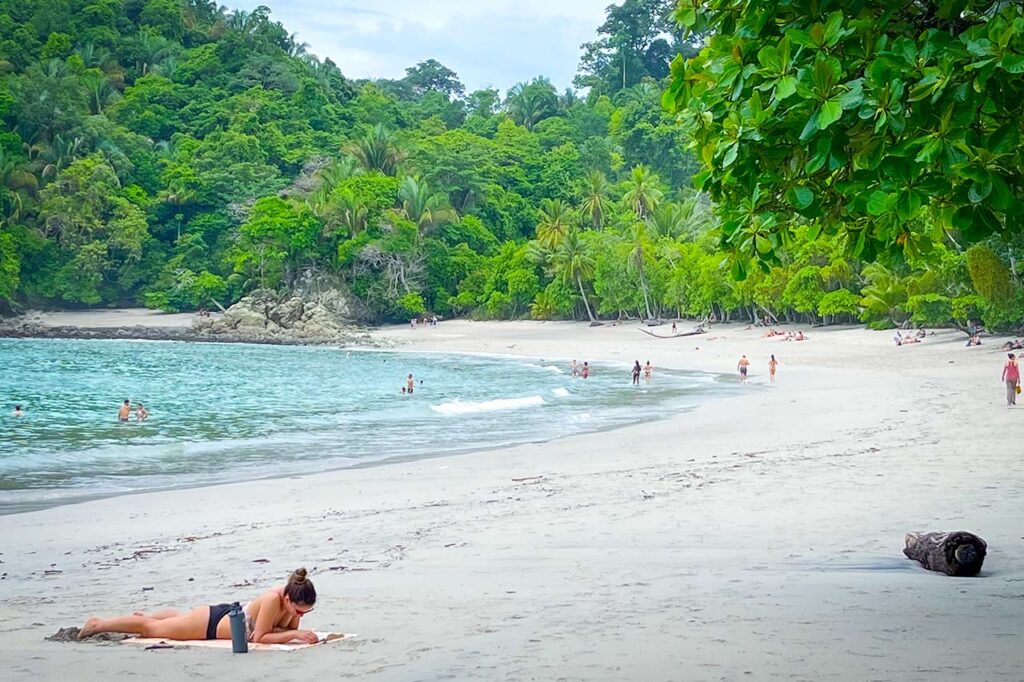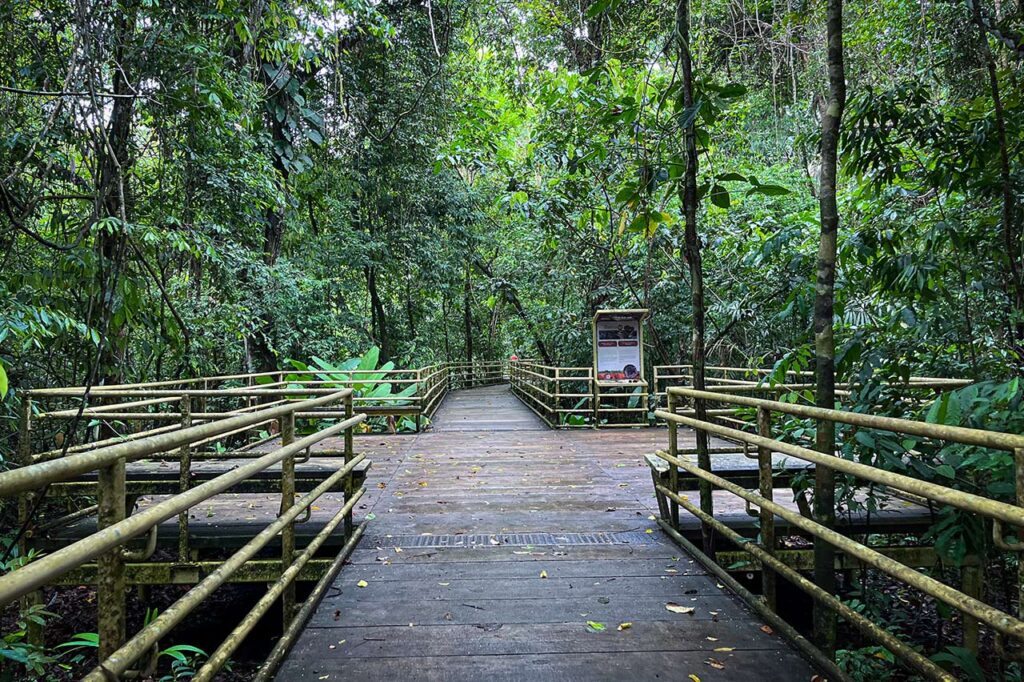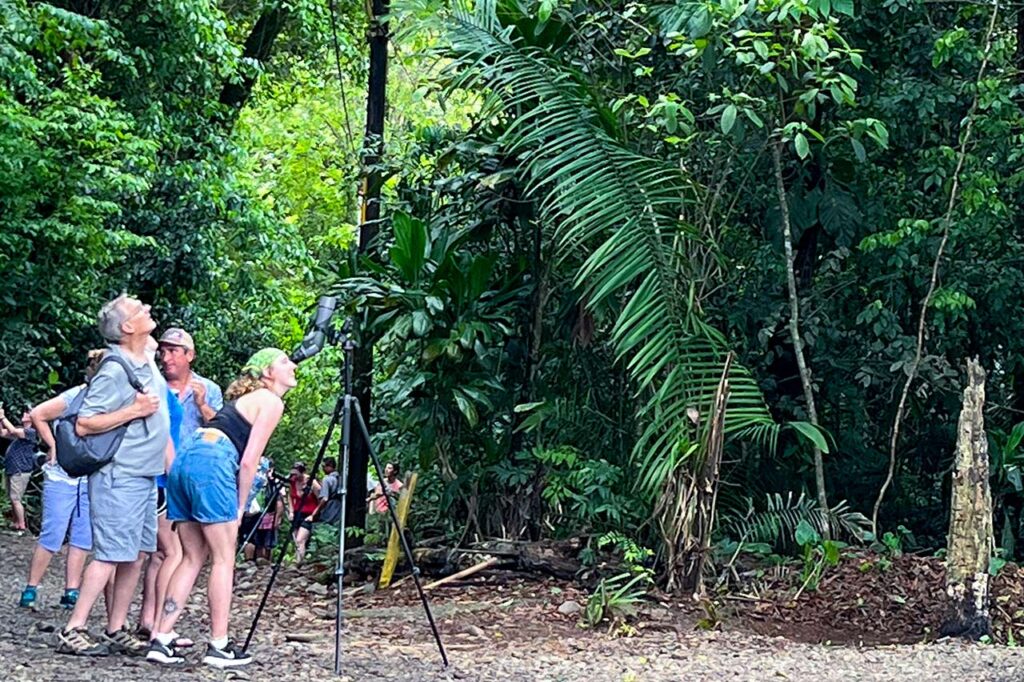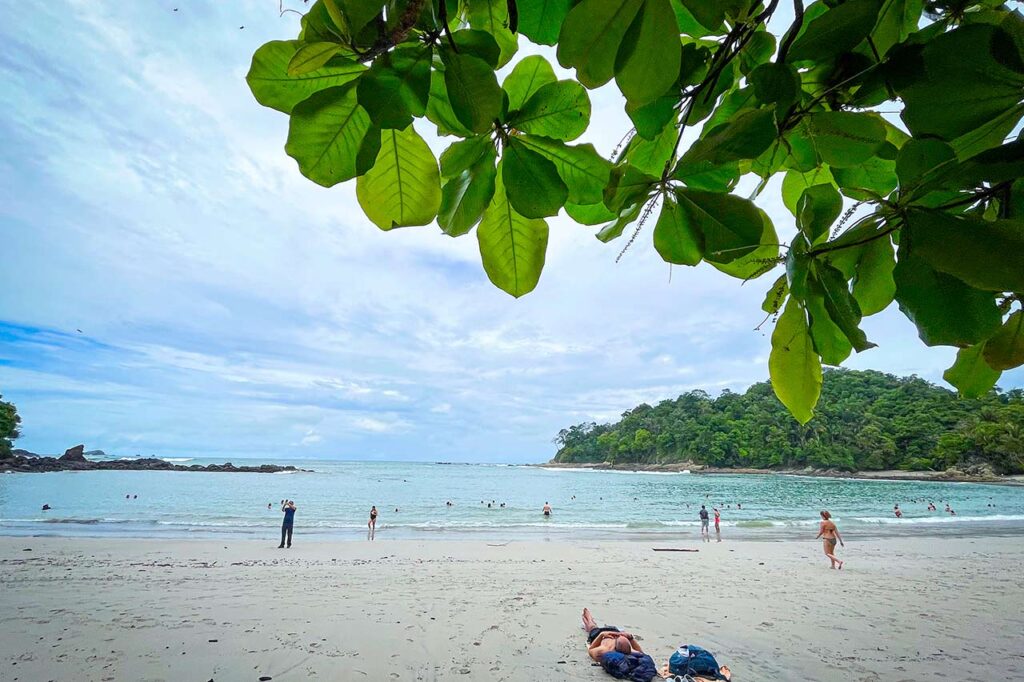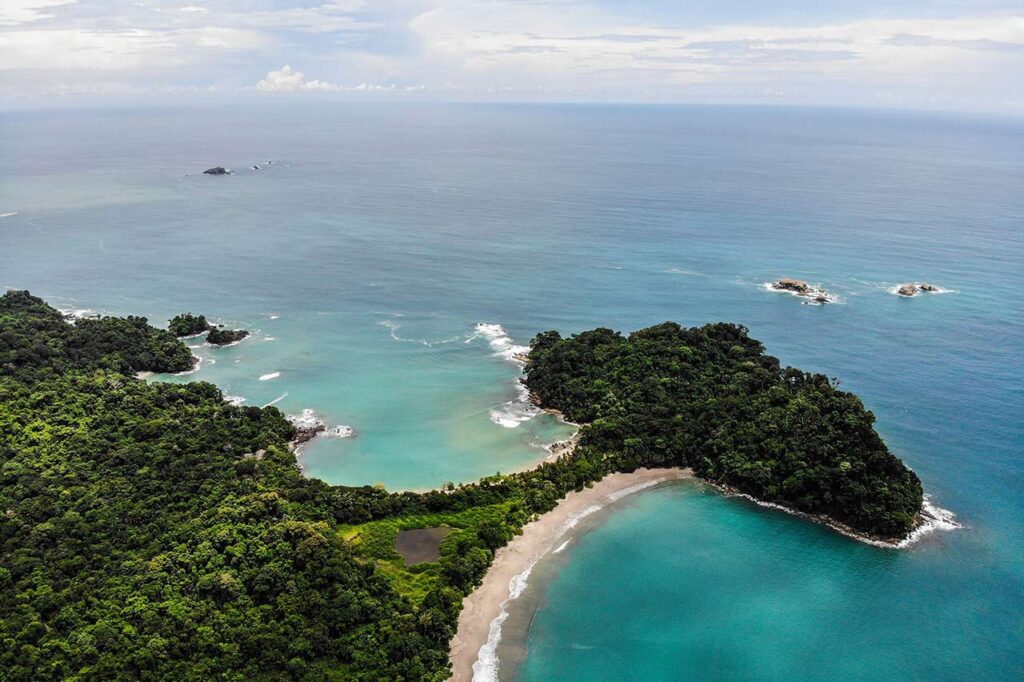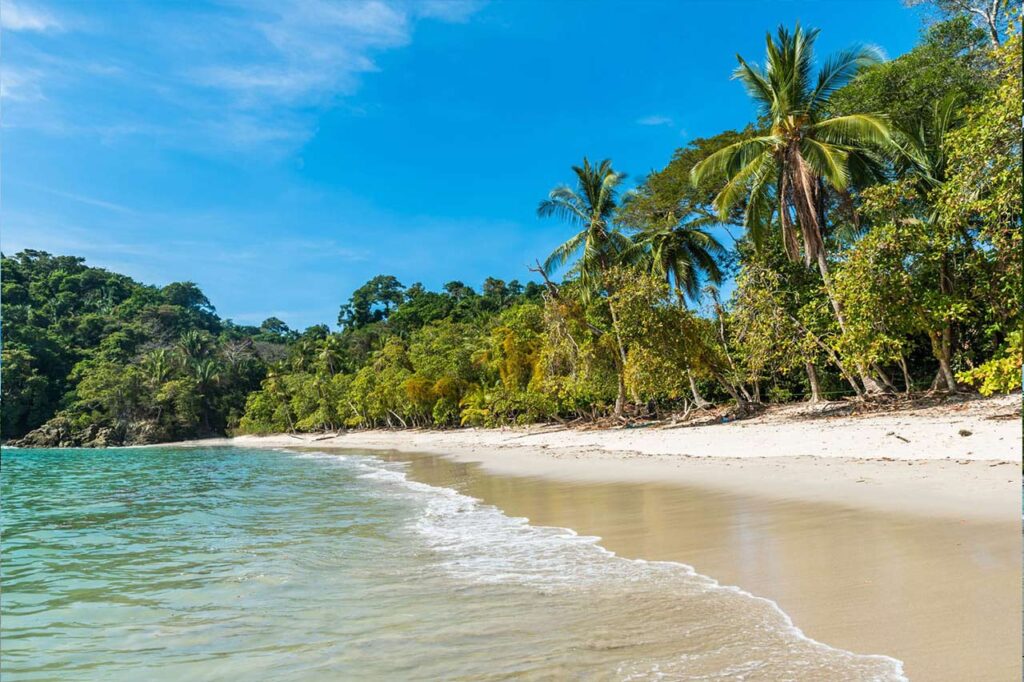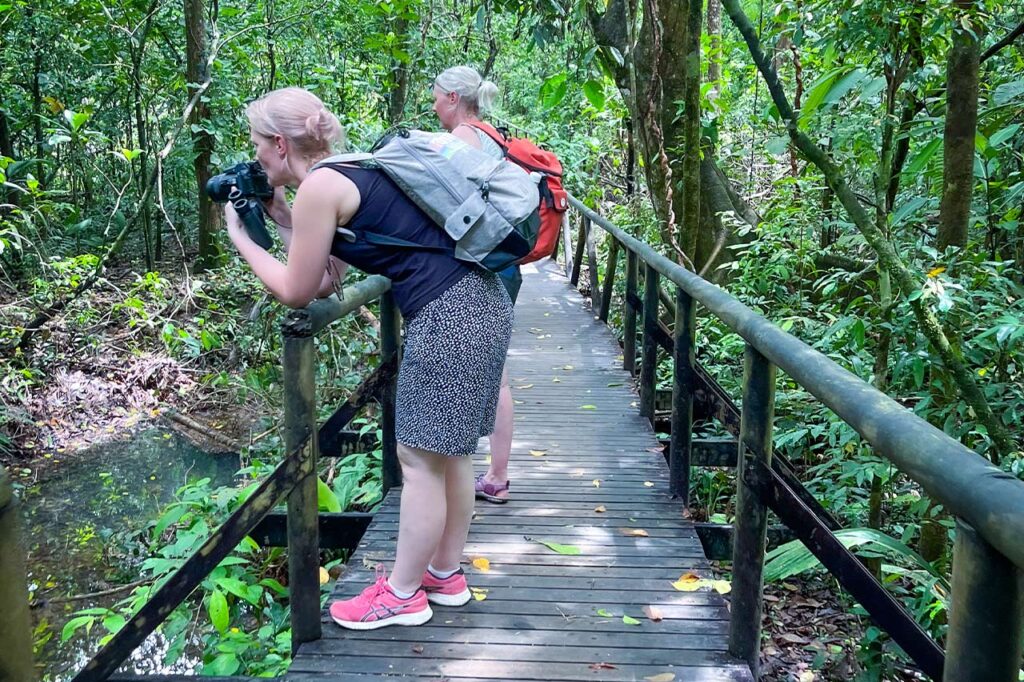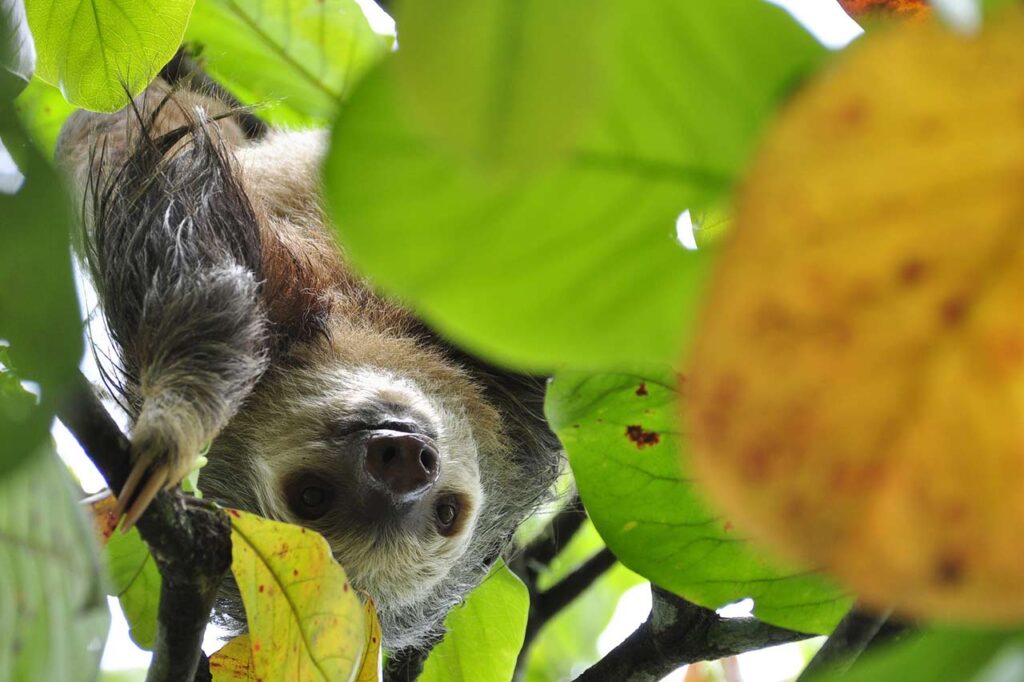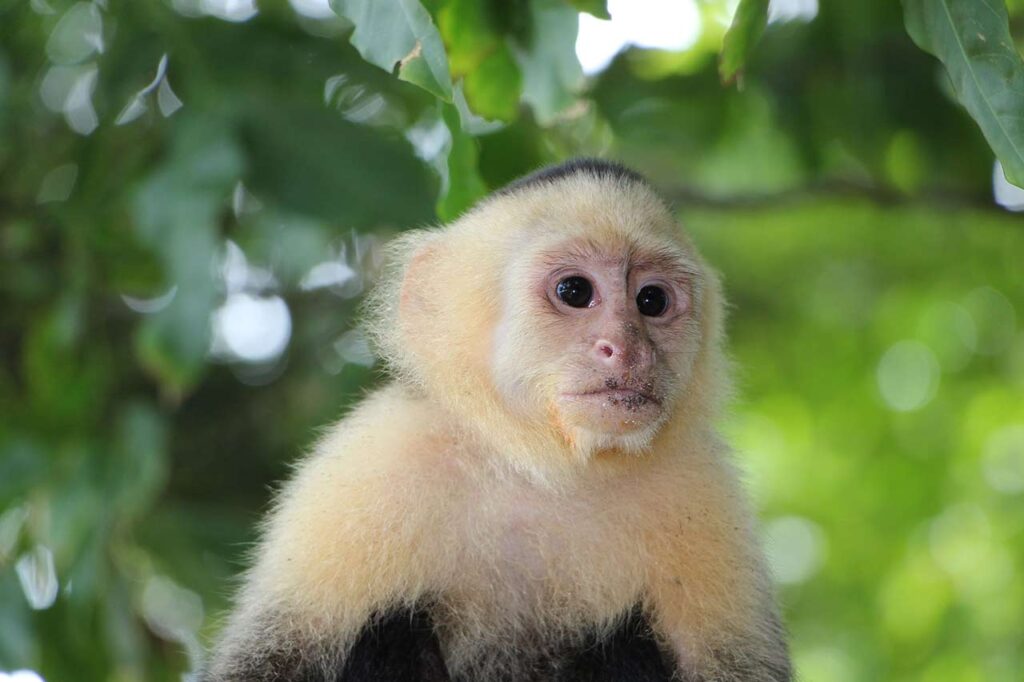
Manuel Antonio National Park
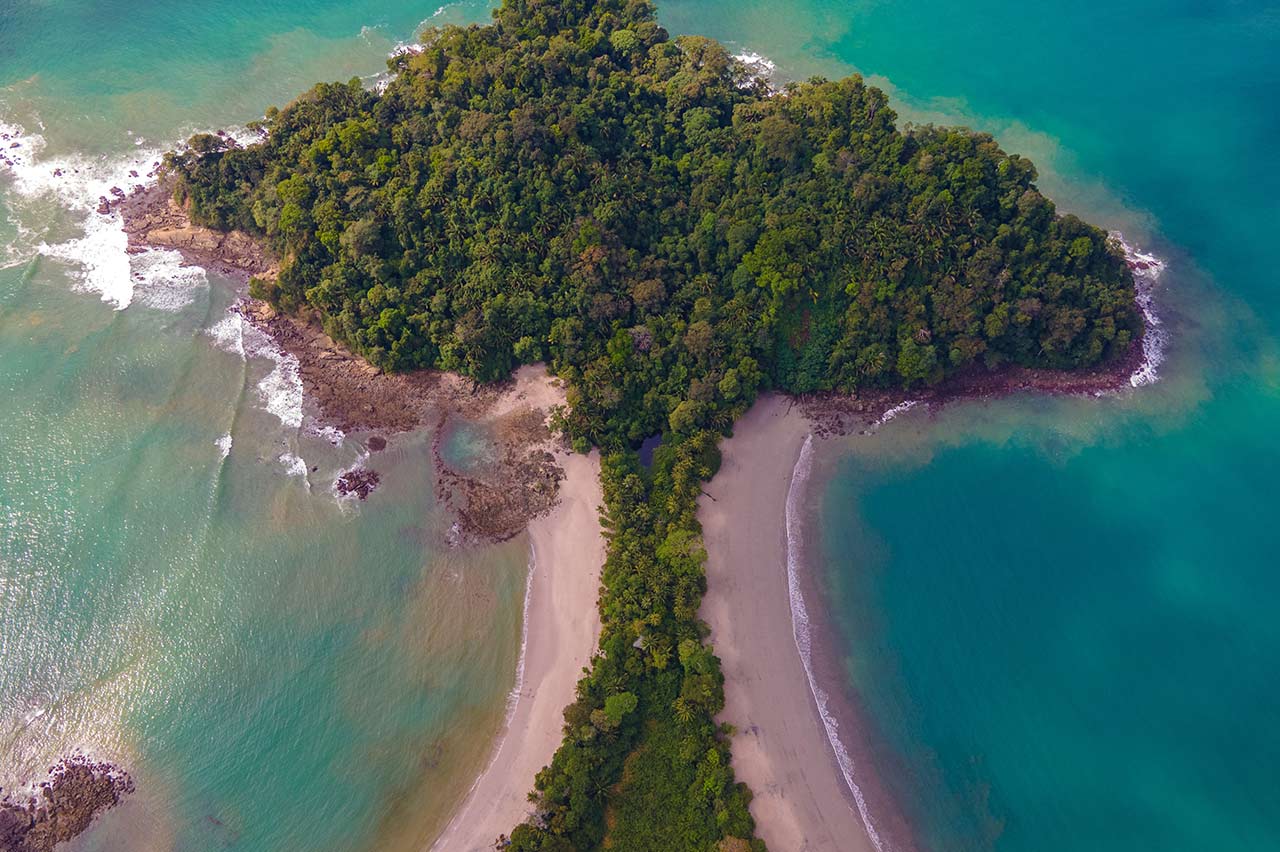
Manuel Antonio National Park is one of the main attractions in Quepos, classified by Forbes magazine in 2011 as one of the 12 most beautiful national parks in the world. In 2019, it was awarded the Traveler’s Choice Award, by Tripadvisor, as one of the 25 best beaches in the world.
In 1949, a very rustic road was built between Quepos and this natural jewel of a national park. Prior to that date, people could only access the area by sea. Although it’s been many years, you might still wonder if you are back in 1949, when driving down the narrow windy road. Restaurants, hotels and tourist attractions take you back in time.
Manuel Antonio is one of the best national parks to visit and observe wildlife. Howler monkeys, squirrels, spiders and capuchin monkeys inhabit the park. Two and three-toed sloths are widely found, as well as raccoons, coatis, agouti pacas, ant bears and sometimes ocelots. There are numerous reptiles, including crocodiles, iguanas, boa constrictors and many lizards.
A dense forest composed by Guacimo Colorado tree (Leuhea seemannii), strawberry tree, rain tree (Samanea saman), ficus, cedarwood, honey locust tree (including the endangered black lobster tree (Robinia Pseudoacacia), rubber tree and satin cotton tree, vines and lianas. Alongside the border is a mixture of manchineel, tropical almond and copey trees and coconut palms. Near the entrance, a small mangrove area showcases three species: red, buttonwood and white mangrove trees.
In Addition to the spectacular beaches, Manuel Antonio offers several miles of hiking trails, well maintained and offering the easiest access to the lowland tropical rainforest in Costa Rica.
The red back squirrel monkeys (titi monkeys) are a huge attraction. The park is actually too small to harbor a viable population, therefore the monkeys travel to surrounding areas, using aerial bridges suspended above the highway, sponsored by local school children. Capuchin monkeys (white-faced monkeys), spider monkeys (red monkeys) and howler monkeys (congo monkeys) usually roam the entrance station, searching for food. Feeding wildlife is illegal.
Over 350 bird species live in Manuel Antonio and several others visit the park. You can observe maroon pelicans at sea and five species of kingfisher, including the Amazonian bright emerald working at creeks and lakes.
Iguanas and ctenosaurs (black lizard) are easily spotted near the shore. Other reptiles and amphibians, including the Four Striped Whiptail Lizard, big-headed anoles (galleguillo), leaf litter geckos, jungle smoky frogs and the red-eyed leaf frog – a symbol of the rainforest – are widely found, but perhaps harder to spot.
We can provide you with all the information to enjoy this wonderful park. Reserve a tour at our front desk. CONTACT US NOW!





